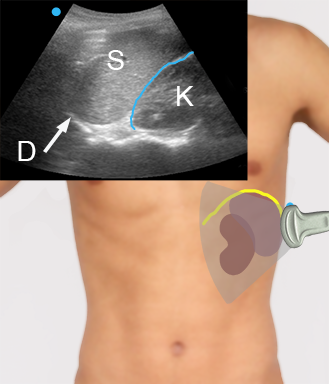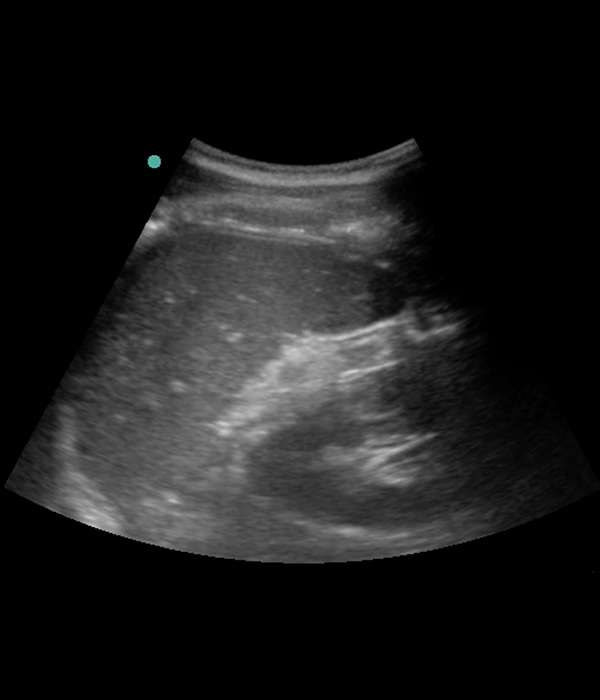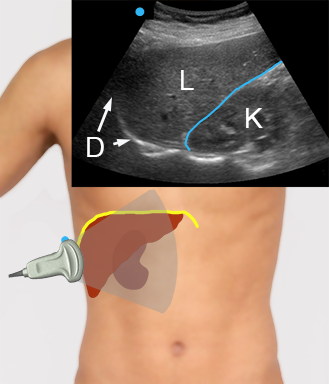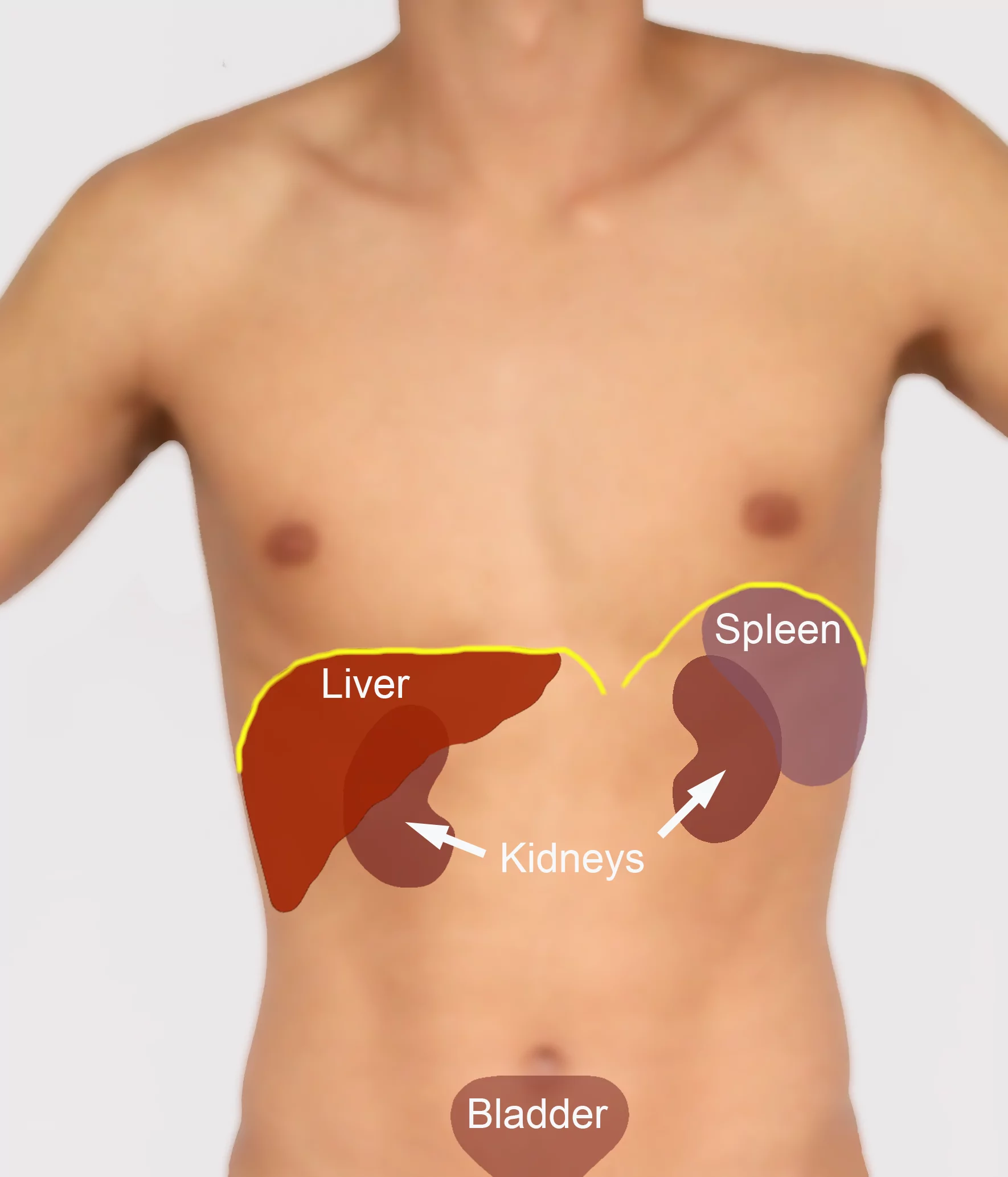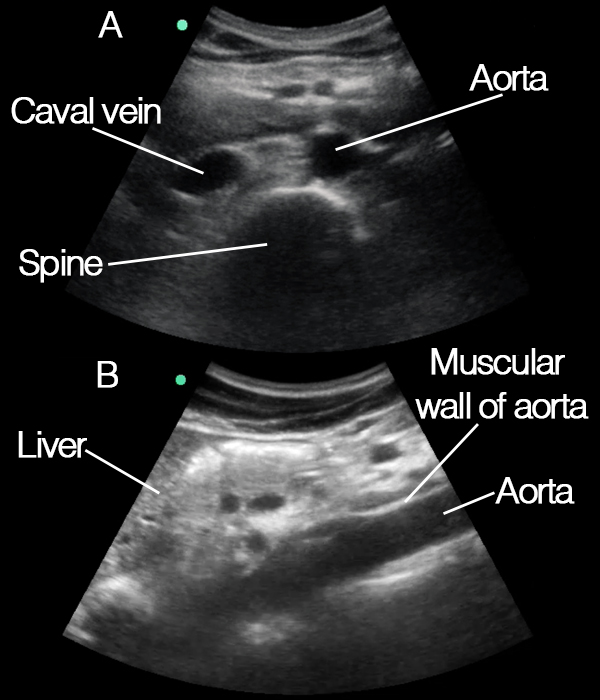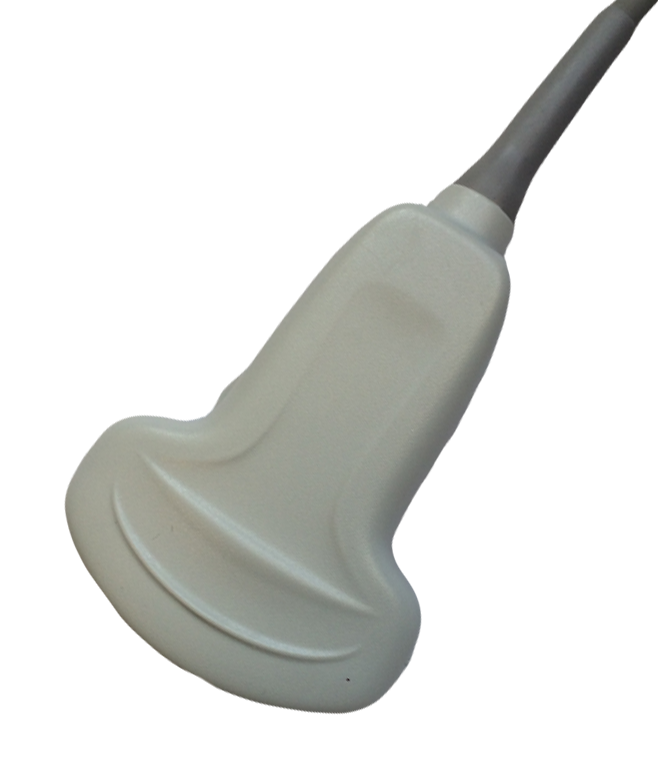The pelvic view is one of the most difficult to interpret as a novice.
This is because of a lot of shadowing and disturbance from the surrounding structures e.g. bowel and bony structures of the pelvis.
In the image below this is especially seen as the dark areas of bony shadowing on each of the sides of the male bladder in the male pelvic view.
These areas should not be confused with intraperitoneal fluid.
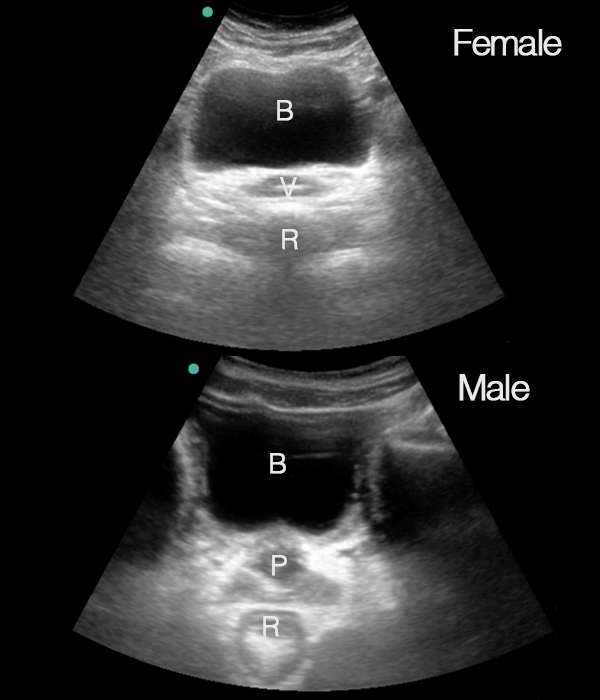
B: Bladder, V: Vagina, R: Rectum
Male:
B: Bladder, P: Prostate, R: Rectum

